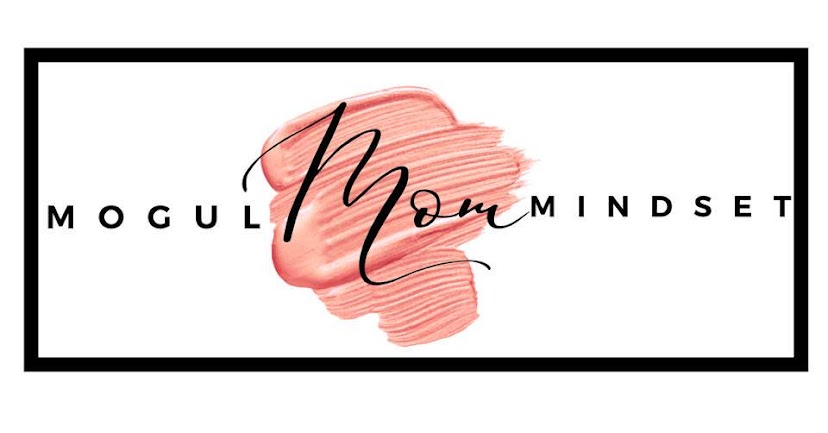A 9-Step Guide to Starting Your Beauty Brand
If you’re looking to start your own beauty brand, there are some important decisions to make. Whether you’re aiming to create makeup, skincare products, or even just post on social media, the first steps towards launching a successful business can be overwhelming. But don’t worry! We’ve collected all the information you need for starting your own beauty brand in one place. So whether you’re an entrepreneur looking for tips or someone who just wants to learn more about what goes into starting a business from scratch — this is for you!Step 1: Don’t get overwhelmed by all the options
The first step to starting any business is making sure you’re ready for what lies ahead. We know how overwhelming it can be when there are so many options, but one of the best ways to get a better idea of what will work for your brand is by choosing a niche that you’re passionate about.
If you already have an idea of what type of products or services you want to offer, do some research and find out what other people in this area are doing. Look at their websites, Instagram accounts, and other social media platforms to see if they have anything similar and if so, how those brands differentiate themselves from each other. It might not be easy finding those answers at first glance — especially if there are lots of similar businesses around — but once there’s something specific that makes your brand unique then it’ll be easier for others to notice what makes yours different!
Next up: Don’t get overwhelmed by all the options! It can be tempting right now because everything seems possible (and maybe even probable), but take some time away from thinking about all these things before diving into anything else just yet…
Step 2: Decide if you want to be a B2B company or a B2C company
Deciding whether to be a B2B or B2C company is important, as it will dictate the type of customers that you want to target and how your business operates. If you’re building a beauty brand, then the most important thing is this: don’t start out selling wholesale. It’s easy to get excited about pricing, discounts and inventory management, but unless you have an established network of buyers lined up, it’s not worth trying to sell wholesale. There are some key differences between these two models:
B2B companies sell their goods directly to other businesses (for example: makeup artists), whereas B2C companies sell directly to consumers (like Sephora).
If you’re thinking about building a beauty brand from scratch, I highly recommend starting out as a B2C company because they tend to be easier than B2B companies when it comes time for scalability later on in life.
Step 3: Don’t rush it (Remember Andrew Carnegie)
Andrew Carnegie was a Scottish-American industrialist, business magnate, and philanthropist. He led the enormous expansion of the American steel industry in the late 19th century and dominated the nation’s steel industry for three decades. In 1901, he sold his company to JP Morgan for $480 million ($15 billion today). He later set up what became Carnegie Corporation of New York, one of his largest philanthropic foundations. He also gave away millions to charities and universities across the country.
Step 4: Run your idea by your network before spending a lot of money
Now that you have a solid idea, it’s time to talk with your network about your plans. Your friends, family, and colleagues can be great sounding boards because they know you best and will be honest about the quality of your idea. They may also be able to provide advice on how to make it better. If you’re working with an existing business partner or investor, consider asking them for feedback on how much money they’d invest in this project if it were theirs.
If anyone thinks there is a market for what you’re selling, ask them if they would use the product themselves — and pay for it! Make sure that what customers are willing to buy aligns with what people say they want before investing too much time into developing something no one wants or needs.
STEP 5: GET THE BEAUTY BUZZ STARTED BEFORE YOU LAUNCH
Get the beauty buzz started! Let people know the vision. What problem are you looking to solve?
Start a blog, social media accounts, and YouTube channel, you will use these resources to build your brand. It’s important to establish yourself as a subject matter expert in your particular niche.
Create a newsletter list. Although social media is great, they control if and when you can connect with your audience. If a social media site decides to shut you down, how would your people know how to find you? Getting the email addresses of your audience is highly recommended for your brand longevity.
Start a Meta group or Twitter account if you are selling products. Meta now even affords you an opportunity to manage your business with a shop on both your Instagram and Facebook fan pages respectively.
Create Pinterest boards with relevant images that will go with your brand’s aesthetic and style guidelines to use as inspiration for future product development or marketing campaigns. Pinterest is the second largest SEO channel online. You want to ensure your business is populating often in the search engine and most importantly, you want to appear at the top of the first page.
If you’re selling products online through Amazon or other eCommerce sites like Etsy, Shopify, etc., then I highly recommend creating an Instagram account where you can share beautiful photos of the products that people might buy from those platforms using hashtags related to the type of customer who would purchase from each one (eBay sellers should use “ebayfashion,” for example).

STEP 6: HAVE SALES GOALS
You miss all of the shots that you don’t take! It’s important to have sales goals. If you don’t, it will be difficult to make sure that your business is growing and thriving. You can set a goal for how much you want to sell, how much money you want to make, and how much money per month or year. I love to use my Yellow Brick Road method to help create these goals and reach them! Your sales goal is “Oz.” Now that you know what your goal is, what are all of the steps needed to get to your final destination? In my Win the Year Digital Course, I break down each step to make the goal clear and attainable.
STEP 7: THINK ABOUT THE TYPE OF CONTENT YOU WANT TO CREATE FOR CUSTOMERS
Now that you have a clear picture of who your customers are, it’s time to start creating content for them. When we started our company, one thing that was important for us was helping other female entrepreneurs create and grow their businesses. We thought about what kind of content would help them do this in a meaningful way, and eventually decided on videos.
We published blog posts to build up an audience around our brand while also building relationships with influencers in our industry (and beyond). But ultimately, YouTube is where we found the most success when it came to getting new subscribers and increasing sales conversions — even though they took more time than other forms of content like blogs or Instagram stories.
STEP 8: DON’T FORGET ABOUT BRAND MANAGEMENT AND MARKET RESEARCH
Now that you have a strong brand, it’s time to make sure that your product meets the needs of your audience. This is an important stage in marketing as it helps you identify any gaps between what you’re offering and what customers want.
You can do this by doing market research: speak with potential customers about their preferences and behavior, then compile the data into a report. Ask them about their favorite products and why they liked them; find out what features are most important to their buying decisions; ask them how much money they would be willing to spend on similar products. The more information you have on what people like or dislike about existing products, the better off you’ll be at determining how much innovation is needed in order to stand out from competitors.
Here are some tips for conducting successful market research:
Ask open-ended questions — avoid yes/no answers
Make sure everyone understands confidentiality before collecting feedback (if possible)
STEP 9. FIGURE OUT HOW MUCH TO CHARGE FOR YOUR PRODUCT.
Pricing your products is one of the most important factors in determining your success. You need to get it right, or else you’ll risk disappointing customers and losing sales. Use this formula to figure out how much to charge for your product:
What are my competitors charging? This is the easiest place to start, but don’t be afraid of breaking away from them if you think that’s what’s best for your brand. If they’re overcharging and you believe you can offer a similar product at a fraction of their price, then go for it! Just make sure you’ve done all your research before making this decision.
What are my costs? Make sure that whatever profit margin (or lack thereof) is built into the price tag doesn’t compromise quality ingredients or craftsmanship — otherwise, no one will buy from you again! And unless someone pays too much attention during chemistry class in high school (not likely), then chances are he won’t care about whether his shampoo has sulfates in it — so don’t worry about being able to add more expensive ingredients into something like shampoo because no one will notice anyway!
WHEN STARTING YOUR OWN BEAUTY BRAND, THERE ARE SOME IMPORTANT DECISIONS TO MAKE, WHETHER YOU’RE AIMING TO CREATE MAKEUP, SKINCARE PRODUCTS OR EVEN JUST POST ON SOCIAL MEDIA.
When starting your own beauty brand, there are some important decisions to make, whether you’re aiming to create makeup, skincare products or even just post on social media.
There are a few different business models that could work well for you:
B2B (business-to-business) — This type of company focuses on providing services or tools to other businesses. For example, L’Oréal sells its products directly to salons and spas; each salon uses the products but does not resell them.
B2C (business-to-consumer) — This type of company focuses on selling directly to consumers via multiple channels such as an in-store boutique or website. For example, Too Faced sells its products at Sephora stores and online; customers can buy directly off the website without having to go into physical stores first!
It’s not easy to start your own beauty brand. It takes time, dedication, and research. But if you follow these steps, we think you’ll be on your way! Let me know which step you’re taking next!
Hello, I’m Tricia J. You may know me as Ask TPJ I help build businesses, brands, and people! I am the lead project manager and podcast host at Mogul Mom Mindset. I started making websites for friends and fixing their social media presence in 2013, and never lost interest in building online sites and brands for up-and-coming CEOs. I have an amazing boss (me!) and I’m unapologetic when it comes to teaching women how to build successful businesses around their family life. I am a lover of good music, interior design, and I’m constantly searching for the best brunch every time I travel. Some day I’ll tell you about the time when, as a corporate employee, I grew and strengthened a corporate account from $40 million during a 12-month contract by creating new systems and building external relationships for an international media conglomerate. For more information about The Purpose Doula, visit my website: www.asktpj.com .



